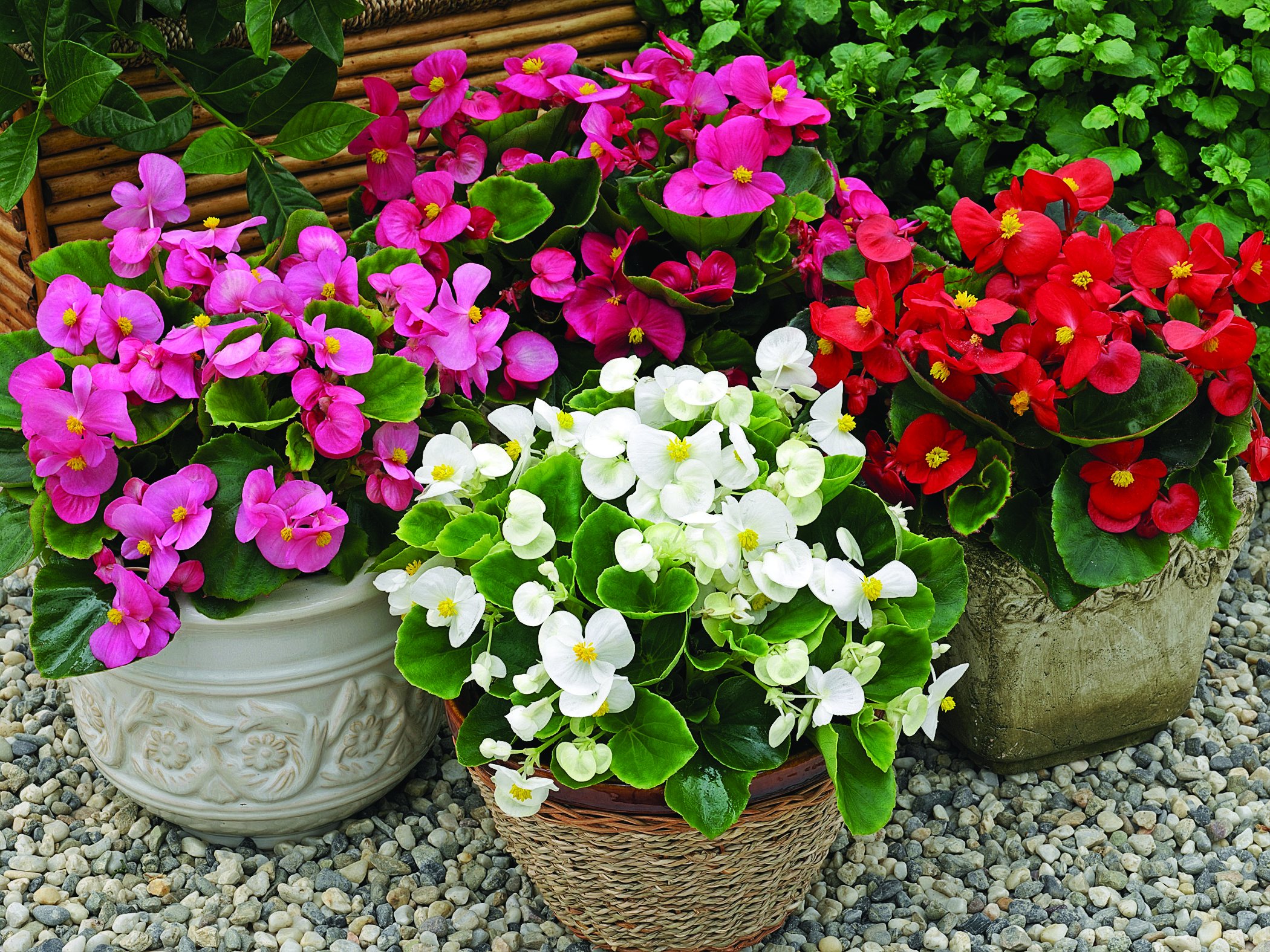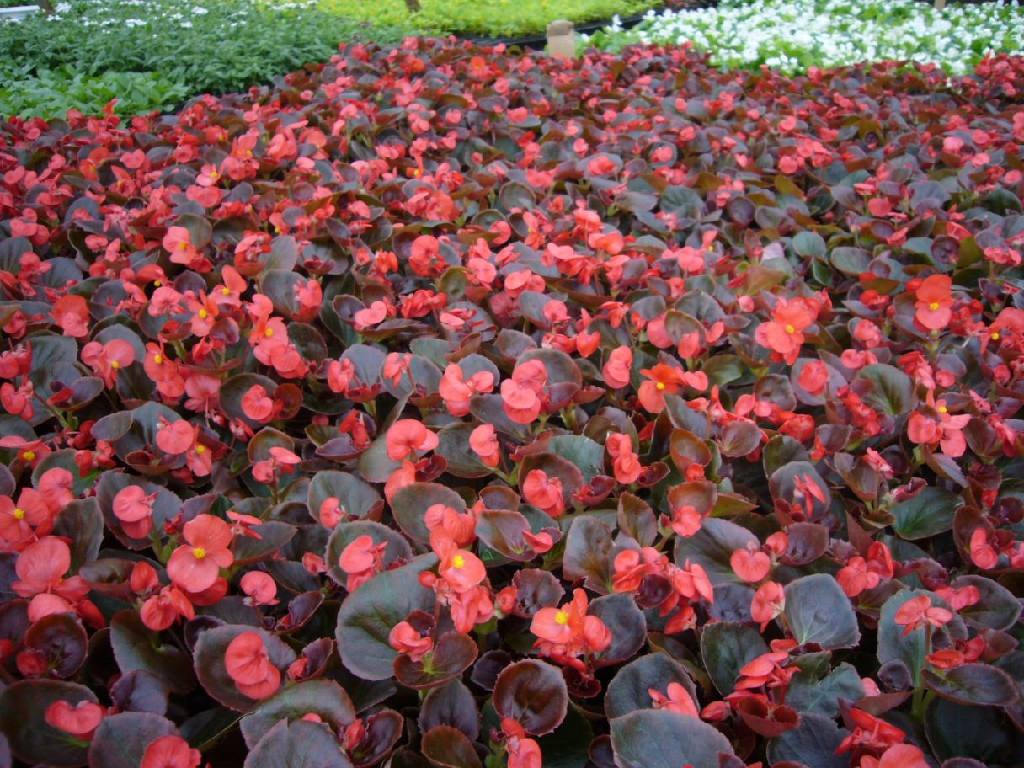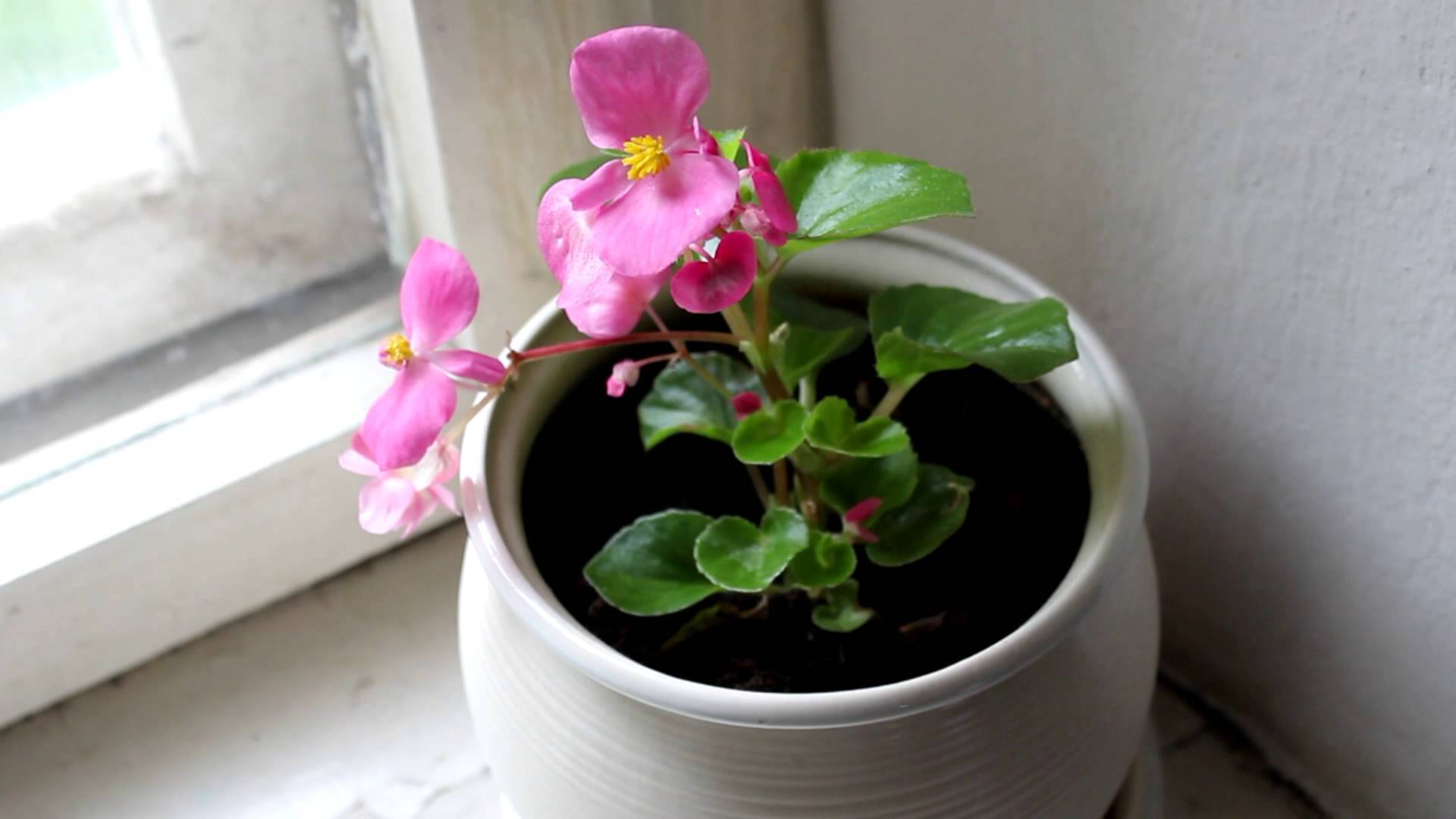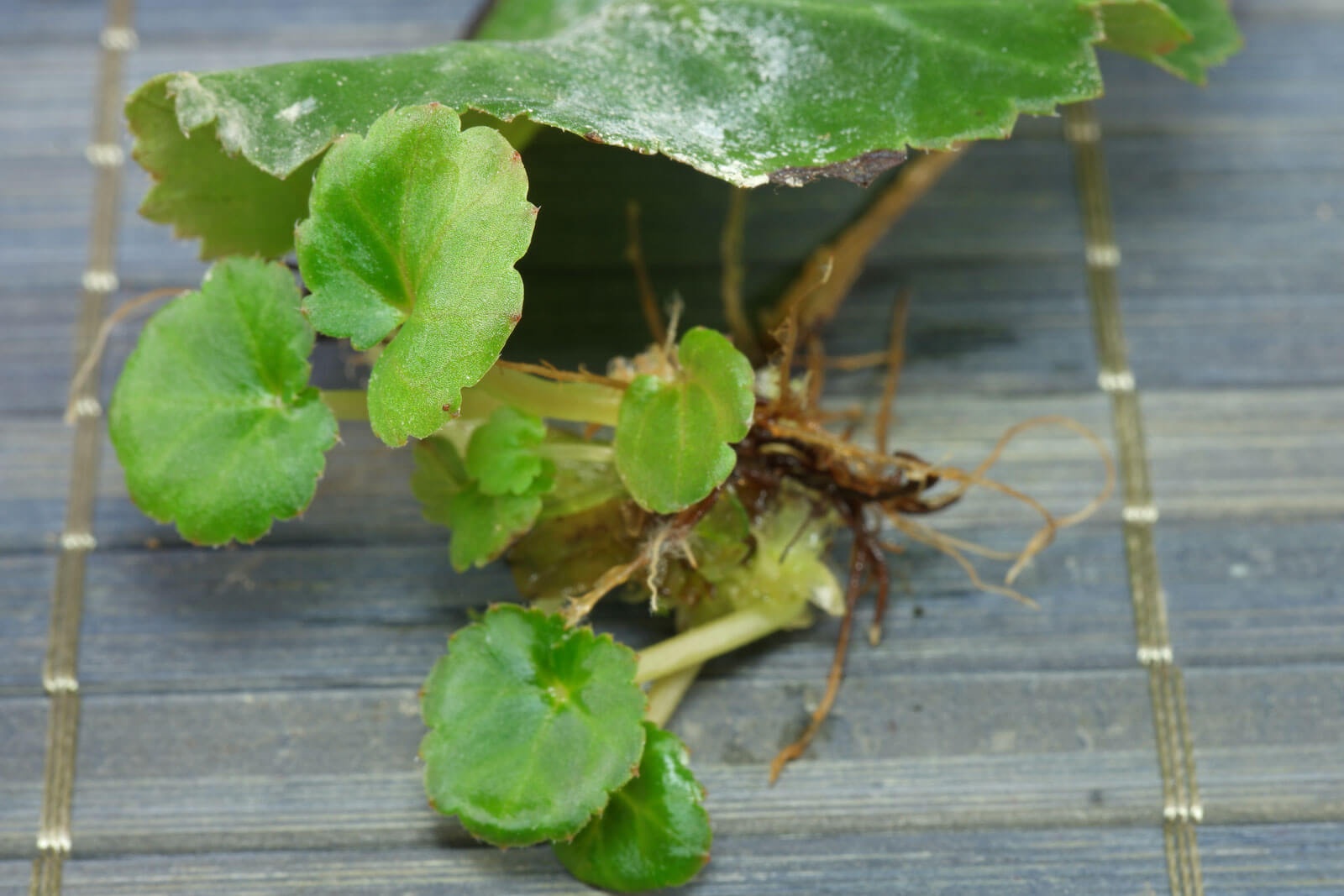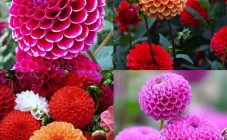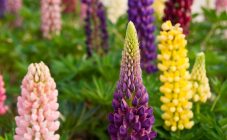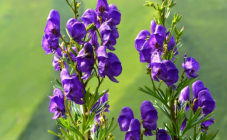Content:
Ever-flowering begonia is an annual or perennial herbaceous flower culture. She belongs to the Begoniev family. Its genus contains over 1000 different species.
Natural habitat of plants South, North America, Africa, Asia. The flower got its name in honor of the Governor of the island of Haiti, Michel Begon.
Today begonia is the favorite of many flower growers. It is grown as an indoor culture, planted in flower beds, in flower beds.
Growing conditions
For flowers, the eastern side of the site is best suited. The sun is there until noon. If you choose a sunny, open place, the plant will suffer from burns. You can plant begonias under the openwork shade of shrubs and trees.
The plant prefers fertile, loose, light, breathable, moist (but not swampy), slightly acidic soils. If there are heavy soils on the site, you need to add the following composition (per 1 m2):
- sand (2-3 kg / m²);
- ammonium nitrate (100-200 g);
- superphosphate (250 g);
- potassium salt (100 g).
Ever-flowering begonia - planting and care in the open field
Growing plants for the garden begins at home (late February - early March). Or in the spring they plant it directly on the flower bed. May is suitable for southern regions. In the middle lane, in the northern regions, it is June.
Preparing for landing
The soil for the flower culture is prepared in the fall. Weeds are removed. Dig the earth deeply, bring in humus (1 bucket / m²).
It is necessary to inspect the tubers before planting the begonias, make sure that they have live eyes. Tuberous bulbs should be of a suitable diameter (4-6 cm).
Old roots are removed from the nodules, cleaned of mold (if any). They are soaked in a slightly diluted potassium permanganate or hydrogen peroxide solution (1%) for 30-50 minutes.
You can buy in the store a special product designed for begonia tubers and process it. This will protect the plant from diseases, pests.
Growing begonias at home
A common container or separate pots are prepared. The containers should not be high, wide.
Drainage is poured at the bottom of the pot: expanded clay or small stone. Part of the soil is laid on top of it (thickness 8-10 cm).
Its composition:
- sheet land (2 parts);
- peat (1 part).
Another option:
- peat (1 bucket);
- lime (50-70 g).
You can take ready-made soil mixture "Begonia".
Then they adhere to the following landing algorithm:
- Nodules are laid out on the soil, leaving a space of 6-8 cm between them.
- Fall asleep with the remaining earth. In this case, their tops remain on the surface. Planting slightly moisturizes.
- The drawers are placed in a warm, well-lit place. However, it should not be exposed to direct sunlight.
- Water the plants periodically. Comfortable temperature + 18-22 degrees. Seedlings should appear after 7-10 days. During watering, water should not enter the center of the tuber.
- The plants are fed (1 time every 15-20 days) with mineral complexes (1-1.5 g / liter of water).
- When the weather is warm, there will be no frost, they take out boxes with plants outside. To begin with, leave for a short time (30 minutes). The time is gradually increased.
- Meanwhile, a flower garden is being prepared. They dig up the earth again to a depth of 20-25 cm, add minerals (for example, Kemira-Lux 30-50 g / m²).
In early June, flowers are transplanted to the garden bed, balcony, veranda, and garden flowerpots. Leave the distance between the plants 15-20 cm.The soil layer under the tubers should be at least 2 cm.
Landing in open ground
When the threat of frost has passed, and the night temperature will be +12 degrees, sprouted or newly purchased begonias tubers are planted in flower beds.
A flower garden is prepared in advance to improve the land (one month before planting work). Fertilize the soil with leafy soil, peat, rotted manure, compost (20-25 kg / m²). Then the soil is dug up, leveled, moistened.
Before planting flowers, they loosen the ground, make holes (15 cm deep). Pits prepared for begonia should be free to fit tubers and roots.
If the plants germinated with seedlings, they are removed from the pots along with the ground, and watered first.
They are seated, observing certain rules:
- small plants, leaving a distance of 10 cm between them;
- medium-sized bushes with a pitch of 12-15 cm from each other;
- large specimens - an interval of about 20-25 cm.
The root collar is deepened by 1-2 centimeters.
They fill up the earth, slightly compact, moisten. You can mulch the ground around the plants of your choice: expanded clay, peat, sawdust. This procedure will preserve soil moisture, eliminate unnecessary weeding and loosening.
Caring for ever-flowering begonia
It is not difficult to take care of flowers growing on the street. Water the plants once every 3 days. In dry, hot weather, watering is carried out more often. You do not need to spray the bushes. All watering work is best done early in the morning or after sunset. It is advisable to use settled water.
At the beginning of the growing season (spring - first ten days of June), plants are fed with nitrogen substances twice with a break (14 days). Then, throughout the summer, during the flowering of begonias, potash fertilizers are applied (2 times / month).
They also use ready-made dressings or make the following mixture (per m²):
- water (10 l);
- superphosphate (20 g);
- potassium salt (10 g);
- potassium permanganate (0.02 g).
The solution is alternated alternately with organic matter, for example, a chatterbox is prepared from water and chicken droppings (1:20). You can spread compost under bushes or feed with this composition (for 10 liters of water):
- boric acid (2 g);
- potassium permanganate (1 g).
To soften the "hard" water, as well as lush flowering, it is poured with vinegar solution (1 tbsp. L / 15 liters of water).
Preparing for winter
The ever-flowering begonia is usually grown as an annual crop. In autumn (September), with the onset of the first frost, the tubers of the plants are carefully dug out using a scoop of a suitable size.
Cut off the stems carefully. Leave the hemp (2-3 cm). They are not cleared of earth. Placed in boxes, which are placed in a dry, ventilated room.
After 2 weeks, when the tubers are dry, shake off the rest of the soil from them. Now nodules are removed for winter storage in a room where the temperature is 5-10 degrees, and the humidity is 80-85%.
If there is a subfloor, you can transfer the boxes with tubers into it, and sprinkle the spaces between the tubers with sand. Or refrigerate in a plastic bag filled with peat.
To propagate begonias at the end of February, when the buds on the tubers hatch, divide the nodules into several parts. Sprinkle the sections with crushed coal or colloidal sulfur powder.
You can also transplant the flowers into pots and the cultivation will continue in the winter at home on the windowsills. South, east windows will do. Thus, breeding of ever-flowering begonias in the apartment is carried out.
Reproduction
Begonia can multiply in several ways: by seeds, tubers, cuttings.
The first option is quite time consuming.It is used primarily by breeders. The second method is briefly mentioned above.
So, you can graft any kind of begonias. Cut off the top of the branch. It should have three pairs of leaves. Remove closed buds, flowers.
The petiole should be no more than 10 cm, with 2-3 internodes. Cut off the extra leaves at the base.
The ends of the cuttings are treated with a stimulating solution (root, epin, zircon). You can prepare such a mixture with your own hands (it is stored for two days at a temperature of + 3-10 degrees):
- water (200 ml);
- aloe (1 tbsp. l.);
- honey (1 tbsp. l.).
The cuttings are immersed in a container filled with water (an activated carbon tablet is added), or planted in a wet mixture of peat and sand.
The cuttings are buried in the soil by 5-6 cm, and then covered with foil or glass. Systematically moisturize and ventilate. After a month they take root. Then they are planted in open ground.
Eternal blooming tuberous begonias can be grown in gardens, parks, balconies, summer cottages. Their bloom will delight all summer. It is noteworthy that even novice flower lovers can easily cope with begonias and can grow beautiful and fragrant flowers.
